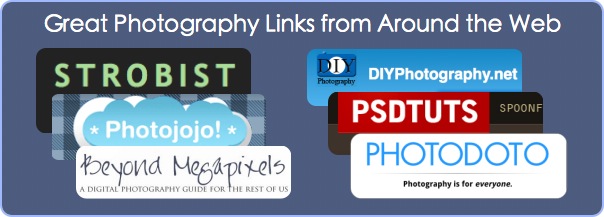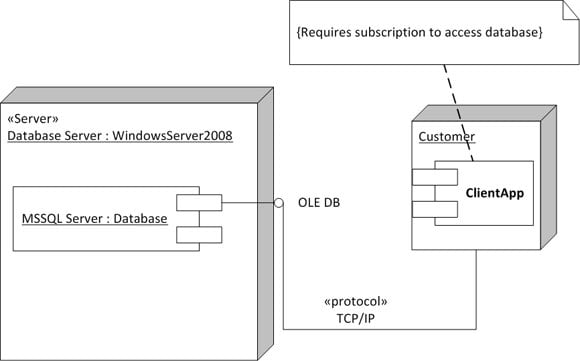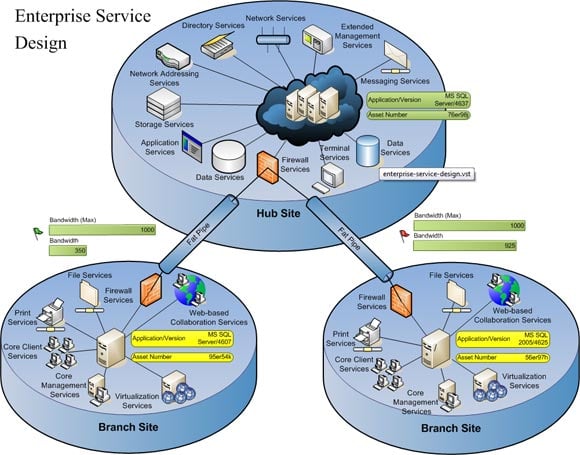Online tools and applications
go2web20.net | Jan 22nd 2011 It appears that this may be a homepage or an index page with non-article content. To accurately view it, you may want to switch to the Full Web Page view.
If you know there should be an article here, help improve the article parser by reporting this page. Thanks!
Online tools and applications
docraptor.com
DocRaptor is a web-based application that allows you to convert HTML to PDF or HTML to Excel quickly and easily. Using Prince XML, this killer software eliminates tedious coding and makes creating full PDF and XLS documents a snap.
docomentconvertfileoffice
imguest.com
A business-oriented social networking platform, used by traveling individuals to set up face-to-face meetings around the world.
travelsocialnetworkgeolocationhotelIsrael
toonti.com
Toonti is a platform that allows you to create your own custom social network. An innovative WYSIWYG Design Wizard and Design Tools make it simple for anyone to design their site. In addition, it has a rich set of tightly integrated features and it supports various privacy options.
socialnetworkcommunitymanagement
readmeo.com
So much to read, so little time? Readmeo is a simple tool that allows you to save links for reading later.
linktoolcontentorganize
pictarine.com
Create your photo albums with your friends. Easily create a medley of your photos and contacts from Facebook, Flickr and Picasa.
photosharealbumprivate
ujam.com
UJAM is a cloud-based platform that empowers everybody to easily create new music or enhance their existing musical talent and share it with friends.
cloudmusiccreate
beachionary.com
Beachionary is a social website for beaches all over the world. Users are able to find details for beaches, such as their location on the map, photos of them, the facilities available at every beach, user reviews and ratings, and nearby hotels.
lifestylehotelsocialtravel
nextstyler.com
If you’re a fashion designer or just have a great idea upload your designs, vote and see your creations on Next Styler Shop.
lifestyledesigntool
tastebuds.fm
Tastebuds music dating helps you find single people in your area who share your taste in music. Simply enter your last.fm username or select your favorite artists to get started.
datemusicmeetsearchcommunication
callloop.com
Call Loop, it's the Constant Contact for voice broadcasting. Now you can easily send voice broadcasts and automated phone calls directly to your clients, customers, and prospects in 2 simple steps.
voicetextmobilemessaging
diyfractional.com
diyFractional is an online service that helps people set up and manage shared ownership of any type of infrequently used asset (such as a boat or vacation home). For those seeking to share something, it's a social network designed to help people find and connect with partners to share an asset with. For those already sharing something, it's a community of experienced shared owners and a robust shared ownership management app that makes managing an asset-sharing partnership easy, providing capabilities such as scheduling, expense tracking and reimbursement, voting, issue tracking, and much more.
socialnetworkcommunitymanagement
sprouter.com
Sprouter facilitates networking and collaboration between entrepreneurs globally. Providing a platform for users to connect with other innovators, entrepreneurs can expand their networks to include fellow entrepreneurs and startups with similar interests and goals.
collaborationconnectnetworkbusiness
summify.com
Summify automatically identifies the most important news stories for you across all of your social networks and delivers to you either as a personalized email digest in your inbox or in a web client.
emailnetworksocialnewslatter
miimr.com
Customize your news feed with relevant information by following over 11 million people, places, and things.
lifestreamcontentsocial
hvr.me
Hoverme is a browser plugin that will enhance your social web experience. With Hoverme installed you will be able to view the social web profile for each of your friends simply by mousing over their name in your Twitter stream.
socialtwittercardplugindownload
meltinpop.com
Meltinpop is a game for you and your friends. It is a fun, free way to explore the culture around you. With meltinpop you can share and discover music, movies, TV shows and books dedicated to your interests, obsessions and whims.
searchenginesocialmusicvideobookIsrael
remindthis.com
RemindThis is an alternative to bookmarking. Through this service, you will be able to have notifications put your way, reminding you to visit a site that you saw just once.
bookmarkingreminderwidget
mixlr.com
Mixlr makes professional broadcasting easy. Broadcast live, high-quality audio across the web, iPhone, iPad and mobile devices. Free.
mixmusicaudioDJmobile
quizsnack.com
QuizSnack is an easy to use online poll & survey software that allows you to create and publish market questionnaires and then view the answers in real time.
realtimequestionpoll
turnsocial.com
The TurnSocial toolbar is a free, easy way to add popular social media and location based applications to your local business website.
socialtoolbarbusiness
contapps.com
Contapps boosts your android contacts with customized widgets and a fresh look & feel. Discover new ways to interact with your mobile community and stay tuned for more cool widgets & updates...
androidmobilecontactwidgetcommunication socialIsrael
livego.com
Facebook, Twitter and your favorite messengers (windows live messenger, yahoo messenger and gtalk) and e-mail accounts (hotmail, gmail and yahoo mail) are all in one place now. Also Social filters, To-Do List, Notes and Calendar empower users.
en.yesblogs.com
Choose your own .com domain name and your blog is available on mobile phones. You may customize each part of your blog, including templates, widgets, and fonts style (200 fonts available). You can also create unlimited mailboxes with your domain name.
bloggingtoolmobile
score.ly
Score.ly is a way to showcase online milestones and legitimate real world achievements. It is fun, acceptable and simple for 13-83 year olds to catalog and boast about their proudest accomplishments.
geolocationmobilesocialfun
tellme.com
Tellme combines the passion of people, the innovation of the Internet, the potential of voice technologies, the unprecedented transformation of the phone, plus a few new ideas. Simply say what you want, and hear or see the results. Then, connect or transact to act on the information.
mobilevoicesearch
planely.com
Tell Planely which flights you’re traveling on and Planely will tell you who else is traveling with you on the plane and at your departure and arrival airports.
travelsocialtrack
admantx.com
Using semantic technology, ADmantX interprets words and content, offers an increased visibility of web pages and conveys the feelings they transmit to readers. ADmantX puts into context around the people, places, brands and companies, things, ideas and concepts the content describes; it can also identify the sentiment, emotions, behaviors and motivations that the content elicits in readers. Together, these elements make for a rich and pinpointed match between content, emotion and online advertising.
advertisingtool
sympoz.com
Sympoz offers a truly great educational experience online. Courses cover a wide range of topics including: Wine, Cooking, Personal Finance, Parenting.
e-learningteacherstudenttool
juxio.com
Juxio is a new visual way to communicate. Individuals and businesses use Juxio to combine images, text and more into a visual streams called Juxes to share across social media and in print.
visualmediacommunication
plnnr.com
Plnnr is an online service that allows its users to generate detailed trip plans within major tourist destinations. Plnnr works by automatically generating a trip itinerary based on simple facts the customer provides about the trip. Similar to a GPS, Plnnr will give you directions on how to get to places. Similar to your best friend, Plnnr will also recommend the places to visit.
travelgeneratorhotelgpsIsrael
ge.tt
With ge.tt you can share any number of files, no matter how large, within seconds. Click on select files. Share the files with your friends. Move on - because you've simply got better things to do.
sharefilesocial
wahwah.fm
Wahwah.fm is a music service, based on your smartphone. With Wahwah.fm, you listen to your music and broadcast it at the same time. Other Wahwah.fm users can tune into your broadcast and hear the exact same music you are listening to. It's like running your own mobile radio station. Anywhere you are. Anytime you like.
musicmobilegeolocation
gameground.com
GameGround is a lightweight personalized app that connects, enhances and allows you to share your gaming experiences and success. Play your favorite Flash games, web games, Facebook games, PC games and Xbox games with GameGround to see all of your results, leaderboards, achievements and high scores in one place. Earn exclusive missions, badges and rewards to get more more from your games and discover new games to play. Share your high scores and success on Facebook and other social networks to compete and compare with your friends.
socialgamedesktopdownloadcommunityfun
startino.com
Startino is online to-do list, which was built to help you organize your daily business. It’s a simple, yet powerful tool, which won’t get in the way of your googling. And it is free.
to-doorganizemanagement
footfeed.com
Footfeed is a mobile geolocation check-in aggregator network that brings together many web services so users can checkin to many networks simultaneously. Built from the ground up as a stand alone check-in service, Footfeed integrates APIs from Brightkite, Foursquare, Gowalla, and Facebook.
aggregatorgeolocationsociallifestreammobile
chewsy.com
Chewsy is the mobile app that will change the way you eat out by showing you reviews of what really matters - the food. Now you can order with confidence, discover great dishes nearby and share your thoughts with the world.
sharefoodsocialgeolocationmobile
carbuzz.co.uk
Carbuzz compiles the most helpful car reviews, so that you can quickly find out what the experts think of each new car. Quite simply it save you trawling the web to research new cars.
searchenginecar
colourdna.com
colourDNA is a social network that combines the likes and loves of people for mutual benefit. colourDNA is the simplest way to discover more of what you love.
colordnadiscoversocialnetwork
threddie.com
Threddie lets you brainstorm using a post-and-comment system everyone's familiar with. Just start a brainstorm, add a briefing and some topics, then invite people to discuss.
commentshare
gogobot.com
Gogobot’s mission is to make trip planning more fun by making it easy to connect and share travel advice with your friends.
travelsocialnetworkgeolocationIsrael
yarooms.com
Yarooms - Web based meeting room planner is aimed at delivering the most effective way to manage a small or medium size company shared workspaces, shared meeting rooms and resources.
meetingresourceoffice
wuala.com
Wuala is a free, simple and secure personal cloud storage and online collaboration tool. You can upload, securely share, discover and download images, videos, music and documents.
cloudcollaborationsecurefieprivate
getquotebase.com
With QuoteBase, you can create beautiful price quotes that your customers will love. Create customized quotes within minutes by using the web interface or by sending an email to the app. You can also collaborate with members of your team and get the quote prepared faster.
businessqoutecollaborationIsrael
qwiki.com
Qwiki, a revolutionary new search tool that enables you to discover more about a variety of topics through a unique and transformative audiovisual reference tool that we call a 'Qwiki'. Their mission is to provide a new way of searching for, and receiving information and content.
wikiaudiosearchmedia
keepio.com
Keepio provides a fast and easy way to collect the things you own, so you can share and swap items with your trusted friends on Facebook and Twitter.
Next Hide tags All rights reserved
Go2web20.net Original Page: http://www.go2web20.net/
Shared from Read It Later
 There's a right way to choose a cloud provider and there's a wrong way. The right way is to do the research about your needs and requirements. The wrong way is to choose a provider by evaluating and comparing vendor offerings.
There's a right way to choose a cloud provider and there's a wrong way. The right way is to do the research about your needs and requirements. The wrong way is to choose a provider by evaluating and comparing vendor offerings.
































